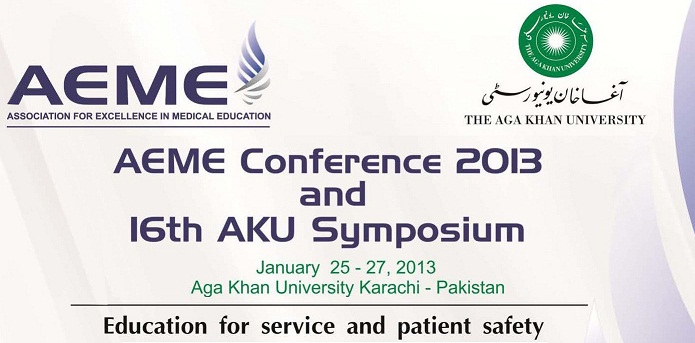Day 2 : Oral Presentations (Theme: Patient Safety)
If you don’t put your finger in, you might put your foot in it
Location
Lecture Hall 2
Start Date
27-1-2013 8:40 AM
Abstract
Introduction: ‘If you don’t put your finger in, you might put your foot in it’ is a popular and very well quoted sentence of Bailey and Love’s Short Text book of Surgery, meaning that if you don’t do the Digital Rectal Examination (DRE) in peri-anal pathologies than you commit a big mistake. With the advancement of new investigations now doctors are becoming more and more dependent on investigations and forgetting the importance of clinical methods. Here we present three cases of ano-rectal carcinoma which were misdiagnosed just because of forgetting this principle and could have been diagnosed earlier.
Case No. 1 A young boy of 22 years was treated as a case of acute anal fissure by his brother, who was a general practitioner, without doing the DRE. But when the condition was not settling, he was referred to us we planned examination under Anesthesia. There was a huge growth involving the internal anal sphincter and due to spasm of sphincter, patient was behaving like a case of anal fissure. Biopsy showed adenocarcinoma with lymphatic and hepatic metastasis. Now the patient is on neo-adjuvant chemo and radiotherapy.
Case No. 2 A 35 year old male presented with non-healing - fistula. This patient was initially treated in a tertiary care hospital emergency as a case of peri-anal abscess without doing the Digital Rectal Examination. We performed DRE and proctoscopy followed by sigmoidoscopy. There was a stenosing lesion at the 9cm from anal verge along with high anal fistula. Biopsy showed Adenocarcinoma and CT scan showed metastatic disease with peri-recal fat and liver involment.
Case No. 3 A 70 year old male presented to us with bleeding per rectum for last 2 years. He was being as a case of hemorrhoids by many different private and public hospitals. In one of the tertiary care hospitals DRE was done by House Surgeon, who labelled the growth as enlarged prostate and was then referred to urologist for the treatment of BPH. When patient came to us we performed DRE and proctoscopy; biopsy was taken from the growth that showed moderately differentiated adenocarcinoma with hepatic metastasis.
Conclusion: DRE is a very important clinical examination and is a must for perianal pathologies. It is also a part of abdominal examination. If DRE was done earlier in these patients by a trained doctor, the disease could have been diagnosed at earlier stage prognosis would be much better.
If you don’t put your finger in, you might put your foot in it
Lecture Hall 2
Introduction: ‘If you don’t put your finger in, you might put your foot in it’ is a popular and very well quoted sentence of Bailey and Love’s Short Text book of Surgery, meaning that if you don’t do the Digital Rectal Examination (DRE) in peri-anal pathologies than you commit a big mistake. With the advancement of new investigations now doctors are becoming more and more dependent on investigations and forgetting the importance of clinical methods. Here we present three cases of ano-rectal carcinoma which were misdiagnosed just because of forgetting this principle and could have been diagnosed earlier.
Case No. 1 A young boy of 22 years was treated as a case of acute anal fissure by his brother, who was a general practitioner, without doing the DRE. But when the condition was not settling, he was referred to us we planned examination under Anesthesia. There was a huge growth involving the internal anal sphincter and due to spasm of sphincter, patient was behaving like a case of anal fissure. Biopsy showed adenocarcinoma with lymphatic and hepatic metastasis. Now the patient is on neo-adjuvant chemo and radiotherapy.
Case No. 2 A 35 year old male presented with non-healing - fistula. This patient was initially treated in a tertiary care hospital emergency as a case of peri-anal abscess without doing the Digital Rectal Examination. We performed DRE and proctoscopy followed by sigmoidoscopy. There was a stenosing lesion at the 9cm from anal verge along with high anal fistula. Biopsy showed Adenocarcinoma and CT scan showed metastatic disease with peri-recal fat and liver involment.
Case No. 3 A 70 year old male presented to us with bleeding per rectum for last 2 years. He was being as a case of hemorrhoids by many different private and public hospitals. In one of the tertiary care hospitals DRE was done by House Surgeon, who labelled the growth as enlarged prostate and was then referred to urologist for the treatment of BPH. When patient came to us we performed DRE and proctoscopy; biopsy was taken from the growth that showed moderately differentiated adenocarcinoma with hepatic metastasis.
Conclusion: DRE is a very important clinical examination and is a must for perianal pathologies. It is also a part of abdominal examination. If DRE was done earlier in these patients by a trained doctor, the disease could have been diagnosed at earlier stage prognosis would be much better.

